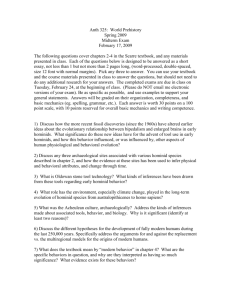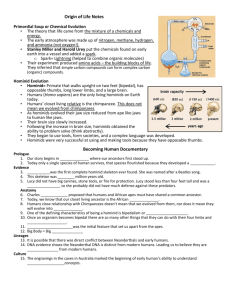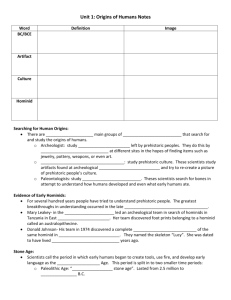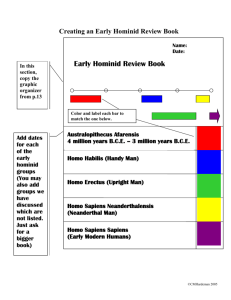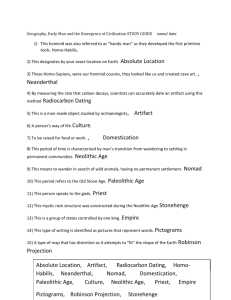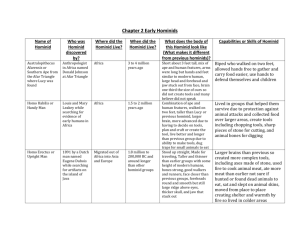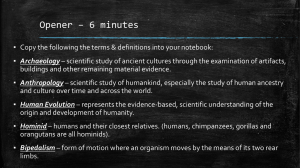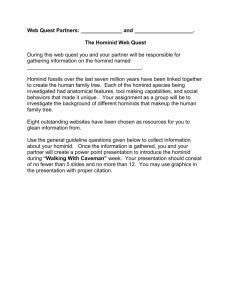Chapter 1 Notes-Early Humans
advertisement
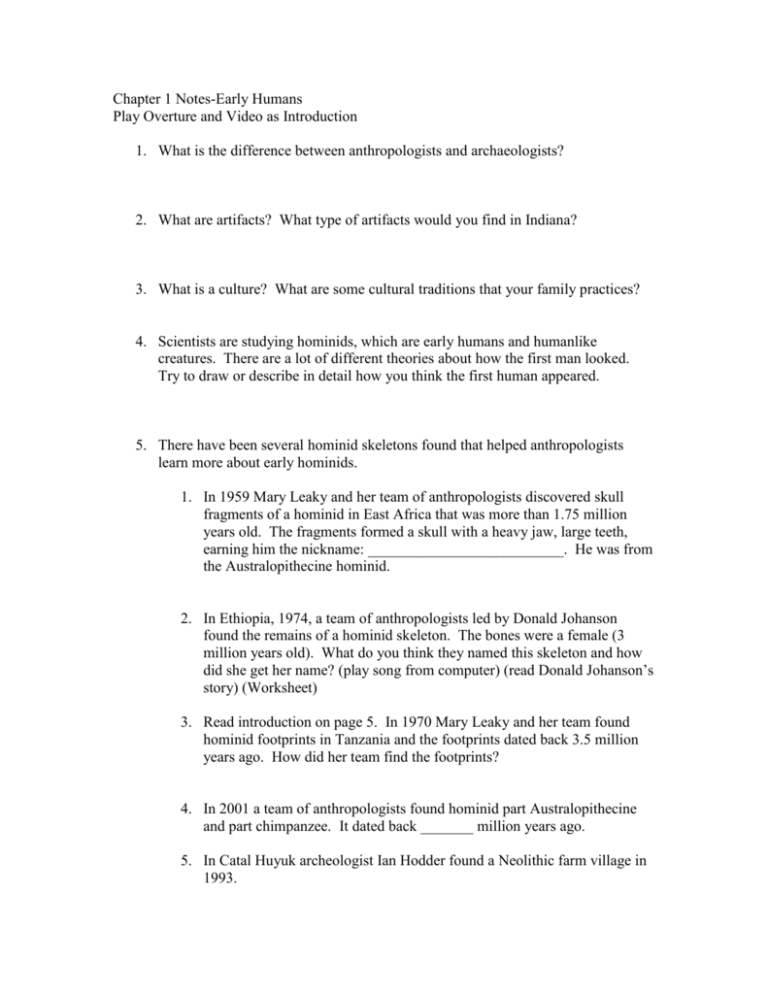
Chapter 1 Notes-Early Humans Play Overture and Video as Introduction 1. What is the difference between anthropologists and archaeologists? 2. What are artifacts? What type of artifacts would you find in Indiana? 3. What is a culture? What are some cultural traditions that your family practices? 4. Scientists are studying hominids, which are early humans and humanlike creatures. There are a lot of different theories about how the first man looked. Try to draw or describe in detail how you think the first human appeared. 5. There have been several hominid skeletons found that helped anthropologists learn more about early hominids. 1. In 1959 Mary Leaky and her team of anthropologists discovered skull fragments of a hominid in East Africa that was more than 1.75 million years old. The fragments formed a skull with a heavy jaw, large teeth, earning him the nickname: __________________________. He was from the Australopithecine hominid. 2. In Ethiopia, 1974, a team of anthropologists led by Donald Johanson found the remains of a hominid skeleton. The bones were a female (3 million years old). What do you think they named this skeleton and how did she get her name? (play song from computer) (read Donald Johanson’s story) (Worksheet) 3. Read introduction on page 5. In 1970 Mary Leaky and her team found hominid footprints in Tanzania and the footprints dated back 3.5 million years ago. How did her team find the footprints? 4. In 2001 a team of anthropologists found hominid part Australopithecine and part chimpanzee. It dated back _______ million years ago. 5. In Catal Huyuk archeologist Ian Hodder found a Neolithic farm village in 1993. 6. In 1959, Mary and Louis Leakey found a hominid fossil in Olduvai Gorge in Tanzania. The hominid was a new species called Homo habilis which means ______________. 7. In 1991 some hikers in the Alps found a Neolithic nomad named Otzi the _______________. Otzi was a remarkable find, because it helped scientists know more about weapons, food, clothing and other important details on how the Neolithic people lived their lives. (Read the Otzi Mystery) 6. Turn and look at the chart on page 7. List the four early groups of hominids that appeared 5 million to 200,000 years ago and tell their nickname and one fact. 7. What continent did humans first live? What continents did humans eventually migrate? Why did it take so long for the hominids to migrate and why did they not just stay in the places they were familiar with during their lifetime? 8. How did the first people come to America by foot? Who were the first people to come to America by boat? (Fill out the ages and Neolithic Revolution sheet) (CroMagnon cave art activity) (Hominid debates) 9. The movie Ice Age is a great Disney movie. Do you think that the Ice Age took place during our history? What important role has it played in our history? 10. After the Neolithic Revolution agriculture became the way that hominids made their living. There are positives and negatives of staying in one place and not hunting and gathering. List some positives and negatives of agricultural settlements. 11. What characteristics does it take to be considered a civilization? On page 20 and 21 please find, list, and describe those characteristics. 12. List the four river valleys that we will be discussing in the next chapter. Make sure to include the continent, country, and river.
